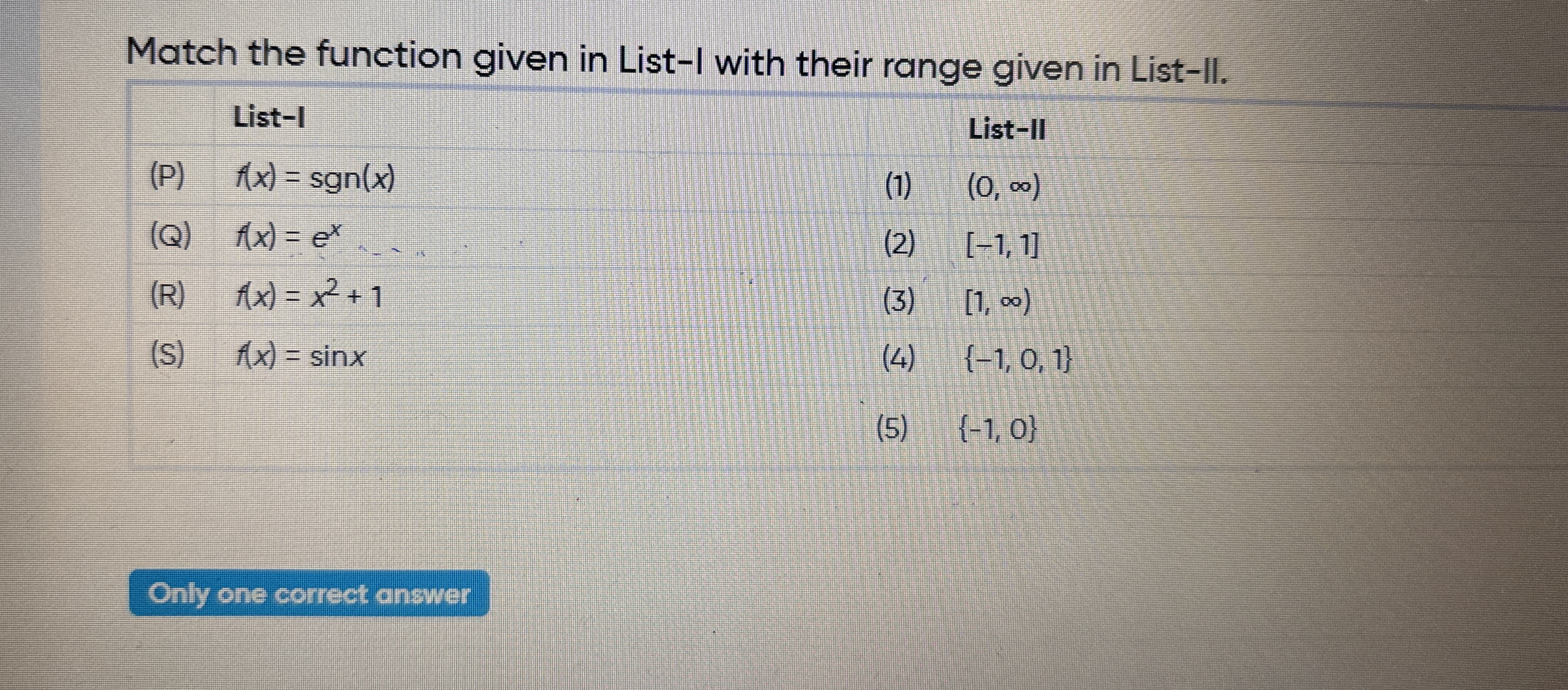Match the function given in List-I with their range given in List-II.

Understand the Problem
The question is asking to match each function given in List-I to their corresponding range from List-II. This requires understanding the properties of each function and determining their range.
Answer
(P) - (4), (Q) - (1), (R) - (3), (S) - (2)
Answer for screen readers
(P) - (4), (Q) - (1), (R) - (3), (S) - (2)
Steps to Solve
- Analyze function (P): (f(x) = \text{sgn}(x))
The signum function returns:
- 1 if (x > 0)
- 0 if (x = 0)
- -1 if (x < 0)
Thus, the range is ({-1, 0, 1}), which corresponds to List-II (4): ({-1, 0, 1}).
- Analyze function (Q): (f(x) = e^x)
The exponential function is always positive and never reaches zero. As (x) approaches negative infinity, (e^x) approaches 0. So, the range is ((0, \infty)), which corresponds to List-II (1): ((0, \infty)).
- Analyze function (R): (f(x) = x^2 + 1)
The squared term (x^2) is always non-negative, making the minimum value of (x^2) equal to 0. Adding 1 means the minimum value of (f(x)) is 1. Hence, the range is ([1, \infty)), which corresponds to List-II (3): ([1, \infty)).
- Analyze function (S): (f(x) = \sin(x))
The sine function oscillates between -1 and 1, inclusive. Therefore, the range is ([-1, 1]), which corresponds to List-II (2): ([-1, 1]).
(P) - (4), (Q) - (1), (R) - (3), (S) - (2)
More Information
Each function has a well-defined range based on its properties. The signum function captures the sign of (x), the exponential function is strictly positive, the quadratic function defined as (x^2 + 1) shifts the range upwards, and the sine function oscillates within a specified interval.
Tips
- Confusing the range of the sine and cosine functions; remember that both oscillate between -1 and 1.
- Overlooking the excluded endpoints in the range of exponential functions.
AI-generated content may contain errors. Please verify critical information